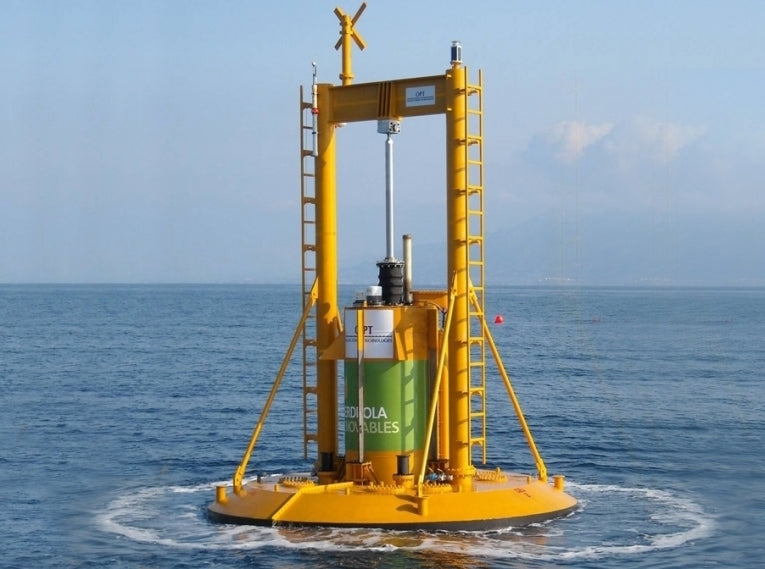As the Curiosity rover lands on Mars, the conquest of Renewable Marine Energy follows the same process: in small measured steps. This important 19 MW project is the next step in the on-going relationship between American wave power technology designer Ocean Power Technologies and Lockheed Martin, one of the world's space specialists.
With the most advanced technology in the country best renowned for waves in the world, the wave energy farm could supply close to 100 MW in the long term.
This team will be responsible of the first wave energy farm in Australia. Installed along the coast of Victoria (Portland), 362 km South West of Melbourne, this 19 MW farm will produce 75000 MWh/year (with a producibility factor of 50%) and supply electricity to 14,000 Australian homes. This project will reduce levels of CO2 by 37,000 tons/year and allow Australia to save $851,000 AUD/year of carbon taxes (based on $23 AUD/ton of CO2). The work is scheduled to start in 2013 and will be completed in 2017.
For the last 15 years, OPT has been the pioneer in conception, prototype creation and the connection of these systems to the electric grid. The American company, founded by George W. Taylor (Australian) and Dr Joseph R. Burn, work with the wave energy converter called "PowerBuoy". Fixed on the sea bed, the technology follows the back and forth wave movement to harness and convert mechanical energy to electricity. These systems are certified by "Lloyd's Register" meaning they can function in big waves that measure up to 28 meters (80-90 feet). However, even with this safety margin, the ocean continues to surprise us. There are two models with a life span of 25 years: "Powerbuoy 150kW" and "Powerbuoy 500kW".
In 2004, the US Navy was in search of a new autonomous system to generate electricity. From this announcement the relationship between OPT and Lockheed Martin was born. The first prototype was installed along the coast of New Jersey in 2005. The program ended successfully in 2008 leading to the development and installation of a more powerful system: 40 kW connected to a grid in Hawaii, followed by a 150 kW system in Scotland and currently, a 500 kW buoy in development. Lockheed Martin contributes its specialist knowledge in the design, production, integration systems, and project management of the PowerBuoy technology. Lockheed Martin also represents financial security for investors and boosts funding research for the Australian project. OPT shares increased by 72 cents after the news of this partnership.
The Australian government contributed $67 million AUD of the $225 million AUD budget for this project and will participate through local industry players to the farm's production, rollout and maintenance. For its operation in territorial Australian seas, Australian company Victoria Wave Partner Pty Ltd (currently held by OPT) will own, manage, and be responsible for its development. Currently, its mission is to evaluate potential funding as well as develop important partnerships with local industry and public services regarding electricity repurchasing and sales. Eventually, energy will be sold to electricity suppliers which power commercial and residential buildings.The economic aspect of this energy is still to be researched before we know its impact on costs. An article written by Gilles Parkinston states that wave energy could remain under 100$/Mwh by 2020.
New American high-technology on Australian soil will bring attention from the local players who also strive to be leaders in the field. The government continues to promoting the nation's intellectual property by financially participating in the development of smaller projects and prototypes like the 2MW Carnegie project in Western Australia and various other projects by Ocean Linx and BioPower System etc... The funding for these, however, remains modest and proportional to their profitability. As Australia is looking to establish its renewable energy industry within an already competitive international context, the Australian government still chooses a significant investment in an American technology that is more advanced.

Article written by: Mathieu Ladouch










